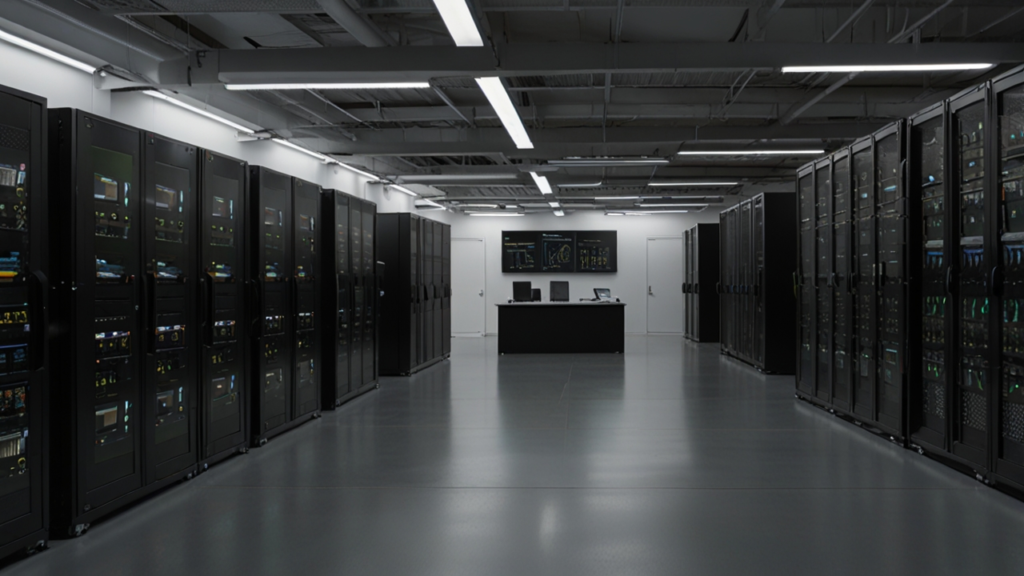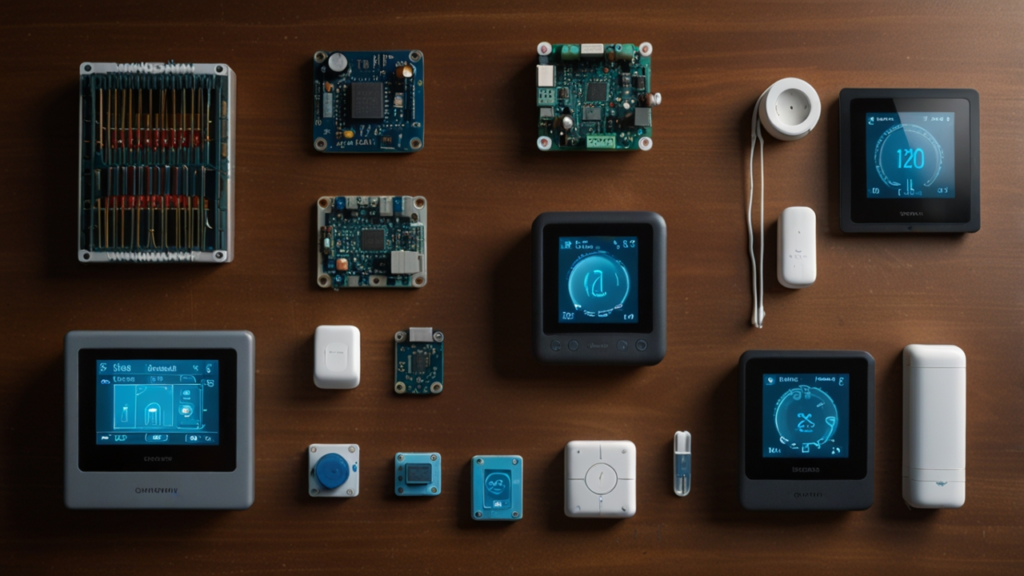What is Mesh Networking? 7 Key Advantages
Mesh networking has emerged as a revolution in the way devices communicate, offering robust, resilient, and seamless connections compared to traditional networking systems. This innovative technology combines distributed nodes to ensure reliability in the face of failures. Its evolution from academic and military experiments to mainstream consumer and industrial applications is transforming digital connectivity.
In today’s digital era, businesses, cities, and homes are leveraging technological breakthroughs to solve modern connectivity challenges. Mesh networking provides solutions by dynamically routing data, offering extended range and self-healing capabilities that simplify network management. With its rapid growth, it continues to shape the future of communication.
Whether you are a tech enthusiast or simply looking for reliable connectivity solutions, understanding mesh networking can give you a glimpse into the future of digital innovations. In this article, we explore its history, current advancements, key features, real-world examples, and emerging trends in this transformative technology.
Table of Contents
- Introduction to Mesh networking
- Evolution and History of Mesh networking
- How Distributed Connectivity Enhances Mesh networking
- Self-Healing Mesh Networking Systems and Their Applications
- Real-World Case Studies of Mesh networking
- Extended Coverage in Modern Mesh networking Solutions
- Future Trends: Wireless Infrastructure and Mesh Networking Beyond
Introduction to Mesh networking
What It Is and Its Core Concept
Mesh networking is designed to allow multiple nodes to connect with each other directly rather than relying on a single centralized router. This architecture provides a self-organizing and self-healing network that enhances reliability and performance.
Each node can relay data to every other node, ensuring that if one node fails, data is automatically rerouted through an alternate path. This design means that the network continues to operate even when individual nodes drop out. The concept is built on the idea of redundancy and robustness, making it ideal for both residential and industrial settings.
In its operational process, mesh networking uses a distributed framework that minimizes single points of failure. This approach creates an efficient, scalable system that maintains constant connectivity across a wide area. Think about a community where everyone can reach each other through multiple paths – isn’t that fascinating?
You might be wondering how this dynamic network maintains performance amidst failures. Have you ever experienced a traditional network breakdown that halted everything? Share your thoughts with us.
For more information, explore this detailed study on consumer mesh network overview [Engadget].
Key Advantages of a Decentralized Structure
The decentralized model of mesh networking ensures that every node in the system enhances network reliability rather than relying on a single backbone. This means that connectivity remains intact even when parts of the network are disrupted.
With this structure, users enjoy improved scalability. As more devices join the network, the overall capacity and performance improve seamlessly. It’s a forward-thinking approach that caters to both small and large scale applications, whether in urban environments or remote locations.
Moreover, the way nodes interact within the network allows for better load balancing, ensuring speed consistency during peak usage times. This distributed approach not only optimizes network performance but also contributes to reduced operational downtime. It’s a smart solution adapted by smart technologies today.
Have you experienced a time when adding more devices improved your network performance unexpectedly? Let us know in the comments.
This explanation is further supported by insights from mesh WiFi guide [HP] on the benefits of a decentralized design.
Also, check out our category on Smart Tech for more updates on modern connectivity solutions.
Additionally, here’s a tag link for further reading on emerging trends in connectivity: IoT (Internet of Things).
Evolution and History of Mesh networking
From Military Experiments to Commercial Success
The development of this technology started in the 1970s and 1980s, rooted in military and academic experiments. Researchers sought to create networks resistant to physical disruptions, catering to field operations and disaster recovery. This led to the concept of distributed node systems where every device contributed to the wider network’s resilience.
Advancements came in the late 1990s and early 2000s when consumer wireless devices and protocols like IEEE 802.11s boosted its potential dramatically. What was once experimental quickly turned into commercially viable solutions covering enterprises, municipalities, and households.
Today, technologies such as Wi-Fi 5, Wi-Fi 6, Wi-Fi 6E, and the upcoming Wi-Fi 7 have accelerated advancements, increasing speeds and reducing latency. The evolution parallels global trends like the rise of smart cities, internet-of-things implementations, and improved digital infrastructure.
Have you ever thought about how early experiments in communication have evolved into systems that power entire smart cities? What fascinates you the most about this history?
For a comprehensive analysis, refer to the market research overview at market research overview [Business Research].
Don’t forget to see this topic also tagged as Smart Home Technology for exciting applications in home environments.
Technological Milestones and Global Impact
Significant milestones in the evolution emerged with the adoption of Wi-Fi 5 and Wi-Fi 6 technologies. The increase in data throughput and decreased latency enhanced the overall network performance and reliability. Regions across North America, Europe, and Asia started integrating this technology into urban planning, industrial automation, and public safety networks.
Notably, Japan and South Korea have been pioneers, deploying large-scale networks incorporating advanced mesh systems into their smart city plans. In Australia, mesh networking is celebrated for extending broadband to remote communities and critical applications. These milestones have shaped global digital infrastructure.
The modernization of communication has had far-reaching consequences on how regions address connectivity challenges. With significant investments and technological upgrades, these networks continue to play a crucial role in supporting modern smart environments.
Have you noticed more reliable network performance in your area thanks to these advanced technologies? Share your experiences!
This evolution is also touched upon in the detailed article from market research and growth analysis [TBR].
Additionally, for those interested in history and technology, here’s a related tag link: Smart Cities.
How Distributed Connectivity Enhances Mesh networking
The Role of Each Node in a Distributed System
Distributed connectivity means that every device or node participates equally in data transmission. This approach eliminates a centralized point of failure and ensures that the network remains highly resilient. Each node is independent yet cooperative, relaying information through the safest available route.
This system scales very well. By adding more nodes, the network extends its reach seamlessly across a given area without requiring complicated setup procedures. With a computational method that excels in load balancing and fault tolerance, distributed connectivity enables networks that are not only robust but also efficient.
The architecture drastically reduces downtime, because if one node fails, another automatically compensates to carry the data forward. This synergy is one of the key reasons why modern systems rely on similar principles for secure and uninterrupted operations.
Are you curious about how robust systems can handle unpredictable breakdowns? Reflect on your experiences with network drops – how did the network recover?
Explore additional resources on this topic by visiting the insightful study at product and technology comparison [Engadget].
This section also integrates fresh insights and is further enriched by reviews in Digital Transformation.
Performance Optimization Through Decentralization
The distributed model minimizes data congestion by allowing nodes to choose the best path for data transfer dynamically. This optimization means lower latency and more efficient use of available bandwidth. Nodes operate independently, verifying network traffic and optimizing routes moment by moment.
The self-organizing capabilities facilitate an automatic response to network changes, ensuring data always finds the fastest and least congested route. This real-time optimization boosts overall performance during peak load hours. Additionally, encryption and protocols improve security while maintaining high efficiency.
This technique is exemplified by modern IoT devices that must operate continuously and without interruption, even under heavy loads. Real-world networks have benefitted greatly from this smart nodal routing, leading to improved customer satisfaction and efficiency.
Have you experienced the benefits of a network that adapts on the fly to high loads? We’d love to hear your thoughts on this practical optimization.
Learn more about these performance benefits by checking this comprehensive review from market trends and forecasts [Data Insights].
And for more discussion, explore the tag Smart Cities to see how connectivity changes urban landscapes.
Self-Healing Mesh Networking Systems and Their Applications
How Self-Healing Capabilities Work
Self-healing in these systems is achieved through intelligent routing algorithms that immediately detect problems and reroute data through alternate nodes. As soon as a node drops or fails, the network automatically compensates by redirecting the data through a healthy node. This ability minimizes downtime, ensuring continuous service.
This feature makes the network extraordinarily resilient. When one component encounters issues, the overall system adjusts quickly, which is particularly important in critical infrastructure applications. The self-healing trait is essential in environments where continuous connectivity is paramount, such as public safety and industrial control systems.
These systems rely on constant, automated monitoring of node functionality, making the network immune to single points of failure. It is truly impressive how quickly the network can recover from disruptions.
Have you ever witnessed a self-healing system in action? How did it impact your work or daily connectivity?
For more insights into this technology, see the detailed report at market size and projections [TBR].
In addition, check out the tag Digital Transformation for related case studies and innovative changes in infrastructure.
Applications in Critical and Consumer Settings
The ability of self-healing networks to maintain connectivity even when parts of the network fail makes them ideal for both critical infrastructure and consumer applications. In industrial settings, these systems support SCADA communications, while in public networks, they ensure uninterrupted service even in adverse conditions.
For example, in environments with high radio interference – like oil storage facilities – mesh systems have enabled real-time operational monitoring despite challenging circumstances. Meanwhile, in consumer settings, self-healing networks are increasingly found in smart homes, contributing to the seamless operation of connected devices.
This adaptability across different use cases emphasizes how the same core technology can serve vastly different industries, ensuring safety and efficiency wherever it is used.
Have you ever relied on technology to remain uninterrupted during a critical moment? Share your experiences with resilient systems.
For further reading on self-healing technology, explore the article on consumer mesh network overview [Ascendant USA].
Don’t miss the opportunity to read more under the tag Smart Home Technology for practical insights on home networks.
Real-World Case Studies of Mesh networking
Utility and Industrial Applications
Mesh systems have been deployed in some groundbreaking ways. In the Mid-Hudson River Valley in New York, a utility company collaborated with ABB to deploy a wireless mesh field area network. This network provided high-capacity, low-latency communications required for multiple utility applications. The use of TropOS mesh routers and edge nodes ensured reliable service across challenging terrain.
Similarly, in Texas, mesh networking enabled real-time SCADA communications in oil storage facilities where metal tanks caused significant radio interference. These examples demonstrate that in environments that require robust and constant connectivity, mesh systems are not just innovative but critical to operational success.
Such case studies validate the power of the technology and offer inspiration to many industries. Organizations have benefitted immensely from improved operational efficiency and enhanced reliability.
Have you seen similar innovations in your region? How significant do you believe these implementations are in transforming traditional systems?
For more details, review the insights from product and technology comparison [Engadget].
Also, check out the tag Digital Innovations to discover more cutting-edge applications.
Comparison Table of Notable Implementations
The following table provides a comprehensive comparison of several case studies that illustrate diverse implementations of these systems. It sums up inspirations, applications, and regional impacts, offering a snapshot of how this technology adapts and thrives in various environments.
Comprehensive Comparison of Case Studies
| Example | Inspiration | Application/Impact | Region |
|---|---|---|---|
| New York Utility | Field Network Resilience | Supports utility SCADA and communications | USA |
| Texas Oil Facility | Industrial Robustness | Real-time SCADA in interference-heavy areas | USA |
| Seoul Smart City | Urban Connectivity | Public Wi-Fi, surveillance and IoT integration | South Korea |
| Rural Australia | Connectivity Extension | Broadband delivery to remote communities | Australia |
| European Smart Grid | Industrial Automation | Enhanced grid communication and reliability | Europe |
Have these case studies inspired you to consider modern network solutions? What success stories resonate with your experiences?
Extended Coverage in Modern Mesh networking Solutions
How Adding Nodes Increases Coverage
One of the primary benefits of this technology is its ability to extend connectivity simply by adding more nodes. With a modular design, each additional device not only enlarges the network but also improves overall capacity. Users can easily scale up their systems to cover larger areas without extensive configuration.
The added nodes also work to distribute the data load evenly, reducing congestion and improving user experience even during peak usage. This scalability renders it an ideal solution for rapidly growing environments where digital expansion is necessary.
This capability has been especially valuable in urban areas undergoing rapid development, where enhanced connectivity is linked to economic and social growth. The flexibility of this configuration plays a critical role in supporting dynamic environments.
Have you ever upgraded your network by simply adding extra devices and noticed improved performance? We would love to hear your thoughts.
For more insights, refer to the detailed methodology noted at consumer mesh network overview [Ascendant USA].
Additionally, check out more about modern network enhancements under this tag: IoT (Internet of Things).
Innovations Promoting Seamless Connectivity
Recent advancements have refined installation processes, integrated backhaul optimization methods, and advanced security protocols. Features such as dedicated wireless or wired links between nodes help manage data flow effectively. This not only improves response times but also ensures secure operations.
Furthermore, as the digital environment evolves, so too do the protocols ensuring that each node can verify and validate its pathways for data transmission. These innovations are making modern connectivity solutions more intuitive and resilient.
This continuous progress has a significant impact on both large-scale infrastructure and everyday smart home implementations. With rapidly changing digital landscapes, these systems keep pace by integrating the latest technological developments.
Could your organization benefit from a system that adapts and evolves without a hitch? What kinds of improvements have you seen in your personal setup?
For further reading, check this detailed analysis from market research overview [Business Research].
Also, see more technological innovations on the topic via the tag Smart Cities to explore related developments.
Future Trends: Wireless Infrastructure and Mesh Networking Beyond
Emerging Technologies and Market Predictions
The future of connectivity is bright with emerging trends that promise even more efficient and secure networks. Market projections indicate growth from approximately $10.02 billion in 2025 to $15.84 billion by 2030, fueled by the rise of connected devices and smart infrastructures.
Technologies like 5G and edge computing will increasingly integrate with advanced networking solutions, reducing latency and enhancing reliability. Self-optimizing and AI-driven network management systems are likely to become mainstream, further revolutionizing the landscape.
Such predictions are based on comprehensive market analysis and technological trends that suggest continuous improvements in network design. The significance of such growth underlines the commitment of industries worldwide to upgrading their connectivity.
Have you envisioned how these emerging technologies might transform your everyday communication? We encourage you to imagine how these trends will shape our lives in the near future.
For more statistics and projections, refer to the detailed report at detailed product analysis [Engadget].
And let’s not forget to explore further innovations by visiting the tag Digital Innovations section on our platform.
Integration with AI and Smart Infrastructure
AI-driven management promises to elevate these networks by automating optimization, troubleshooting, and security measures. As smart infrastructures evolve, these systems will be integral in powering critical urban and industrial applications. Enhanced encryption and threat detection will further safeguard data across the network.
Integration with AI will mean that the network not only self-heals but also learns and adapts over time, becoming more efficient and secure with each passing day. Future smart cities and connected communities are set to benefit immensely from these advancements.
This integration is expected to open up new possibilities in digital transformation for both large enterprises and smaller, community-based networks. The technology will also likely reduce operating costs significantly and boost overall performance.
What future capabilities do you think AI can unlock in your network? How do you see smart infrastructure evolving in the coming years?
For a deeper understanding, reviews and data from industry analysis [Mordor Intelligence] provide the necessary background.
Also, stay updated by exploring insights available under the tag Smart Home Technology to see how AI integration is shaping home networks.
Mesh Networking Insights: A Fresh Perspective
This section offers a captivating look into the transformative journey of modern connectivity, focusing on how innovation can redefine everyday communication. Imagine a scenario where devices cooperatively relay messages, each one a vital link in a chain of dynamic interactions that intuitively adapt to challenges. Over time, the blending of theoretical principles with practical applications has revealed remarkable resilience and creativity in design. Now, picture a network that effortlessly adapts to disruptions by constantly adjusting pathways, ensuring no single fault leads to a complete halt. In this realm, redundancy isn’t just useful—it becomes a strategic advantage that delivers smooth and uninterrupted service. Observing these dynamic systems offers lessons in consistency and adaptability that can inspire solutions in various fields.
This fresh outlook encourages you to revisit established ideas, fostering an environment where continuous improvement and responsiveness are key. The narrative behind this technological evolution hints at possibilities that seem almost futuristic, yet are steadily becoming realities. It invites you to reflect on how even the most interconnected systems can still find room for growth and reinvention. With every unexpected twist, the embedded intelligence of these networks reveals surprising efficiencies. As you consider this perspective, take a moment to think about your own experiences with change and adaptation in technology. Such insights serve as a bridge toward envisioning a world where every connection reinforces reliability and progress.
This unique take offers a nuanced appreciation of modern systems, leaving the reader pondering future transformations.
FAQ
What is mesh networking?
It is a networking approach where each node connects directly to multiple other nodes, forming a decentralized, resilient system that self-organizes and self-heals to maintain connectivity.
How did mesh networking originate?
Mesh networking began as a research concept in the 1970s and 1980s for military and academic applications, later evolving into commercial solutions as wireless technologies advanced.
What benefits does a decentralized network offer?
The decentralized approach enhances reliability by eliminating a single point of failure, allows continuous connectivity, and improves scalability by adding more nodes easily.
How does self-healing work in these networks?
Self-healing systems automatically detect node failures and reroute data through alternate paths, ensuring that the network remains operational despite disruptions.
What future trends are expected in this technology?
Emerging trends include greater integration with 5G, edge computing, and AI-driven management, promising even faster, more secure, and reliable connectivity.
Conclusion
The journey of this transformative connectivity model is both inspiring and essential for today’s digital landscape. With the decentralized approach, self-healing designs, and scalable extensions, it is clear that this technology is not just a passing trend but a lasting foundation for modern communication. Its proven applications in utilities, industrial sectors, and smart cities illustrate its real-world value.
You are encouraged to reflect on how these advancements might impact your personal or professional environment. The future is bright for innovative networking solutions that continue to evolve and adapt to our ever-changing needs. For more details or if you have any queries, feel free to Contact us.
Have you experienced similar cutting-edge solutions in your daily life? Share your thoughts and join the conversation.



